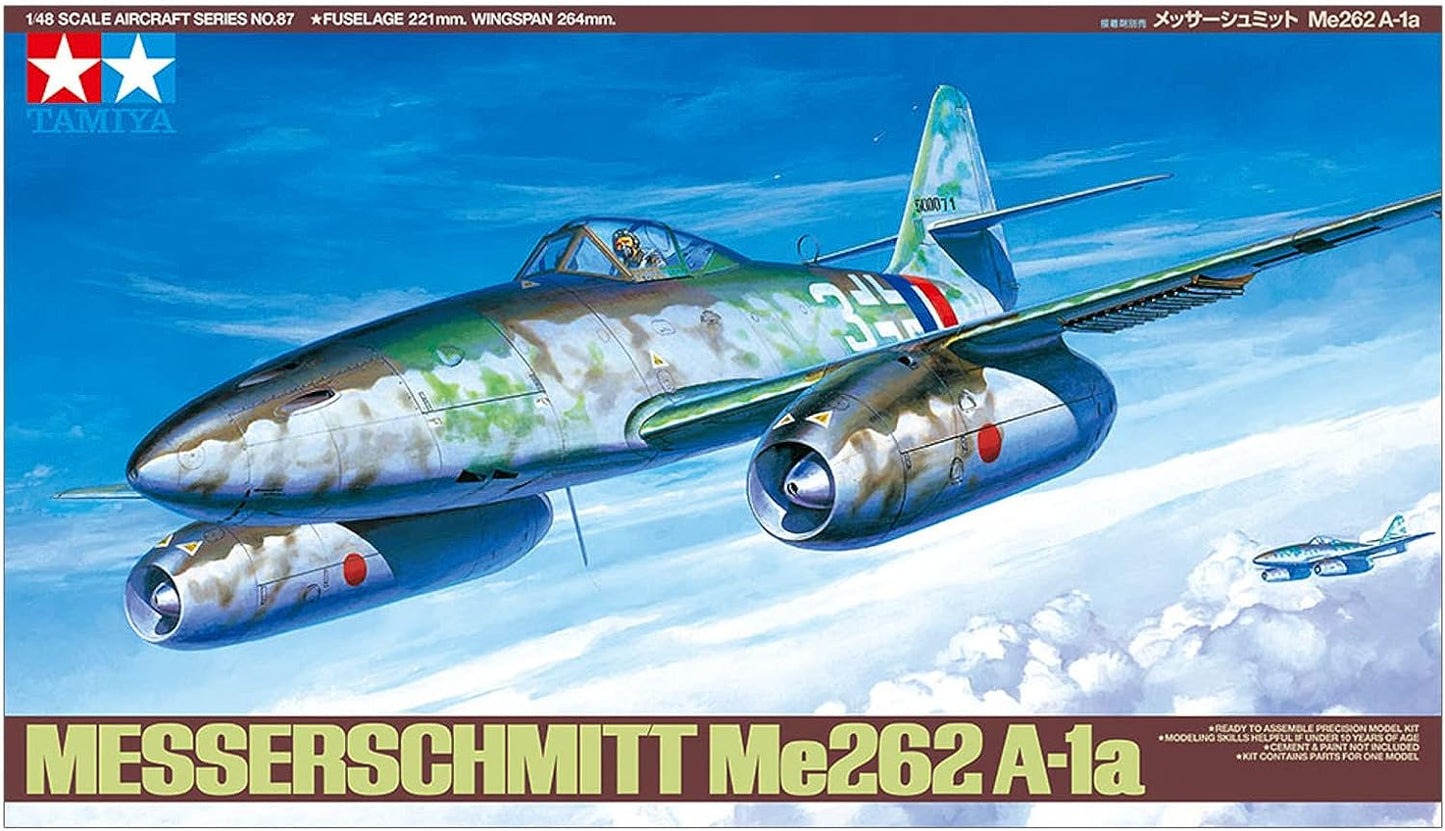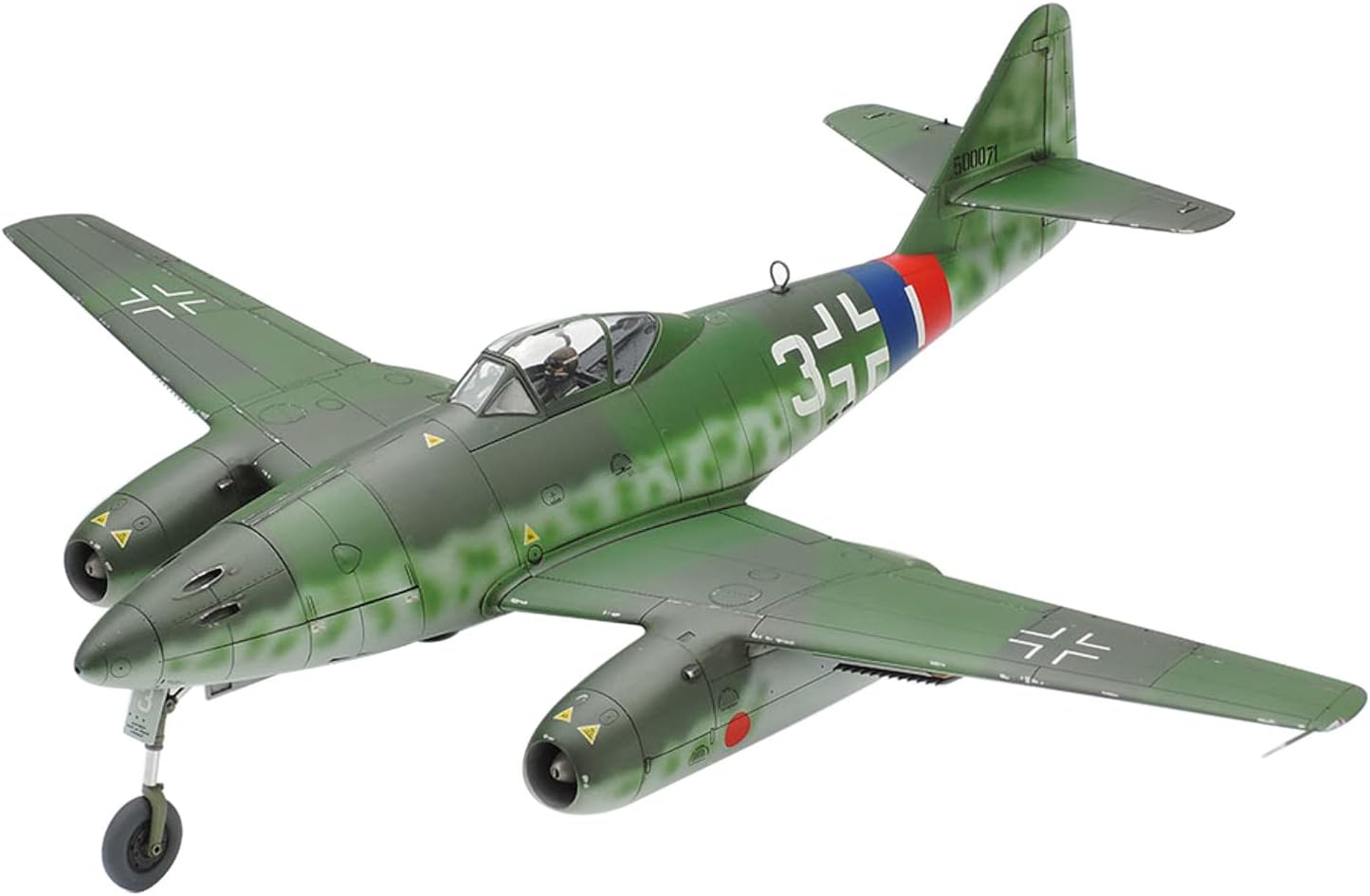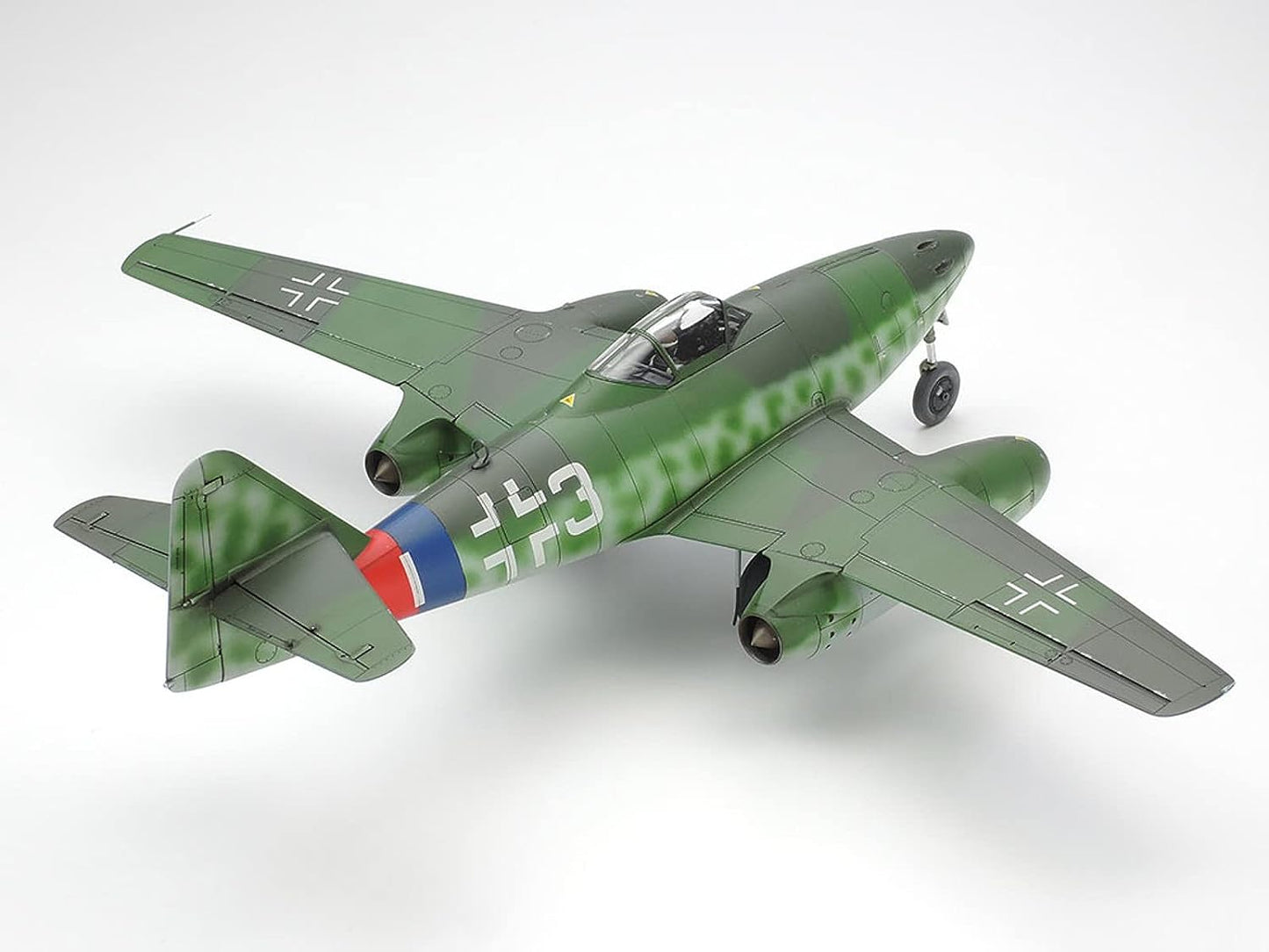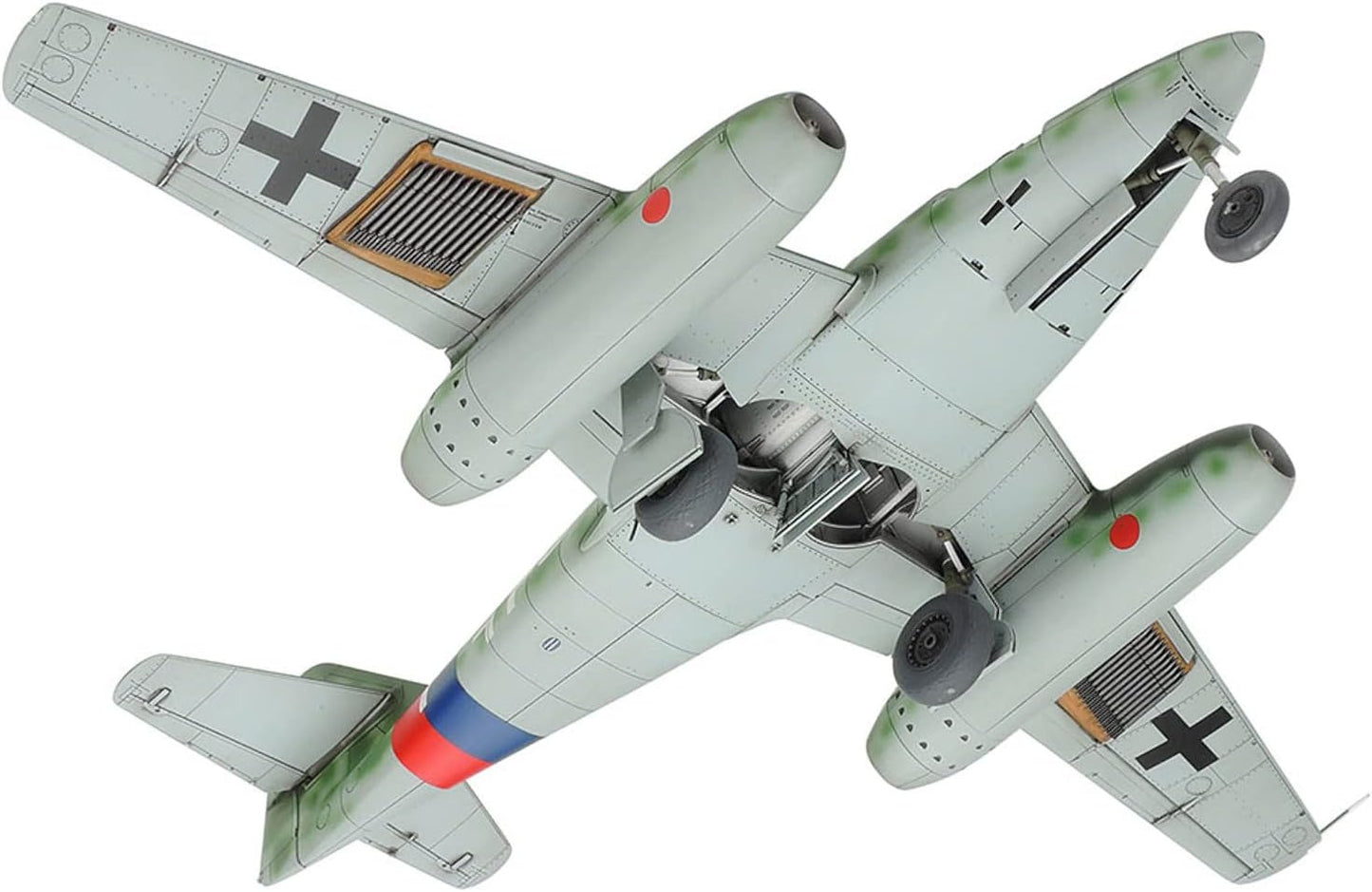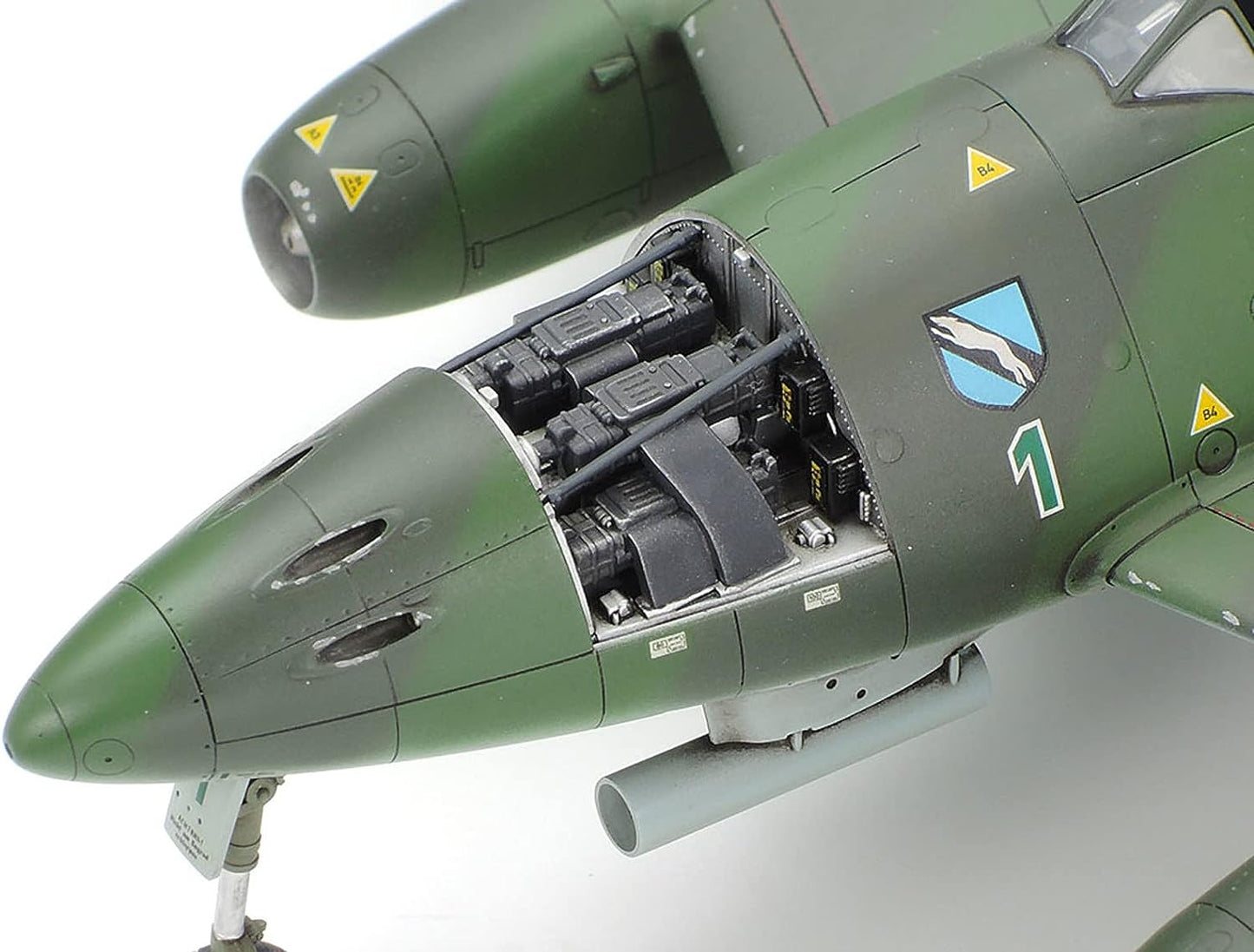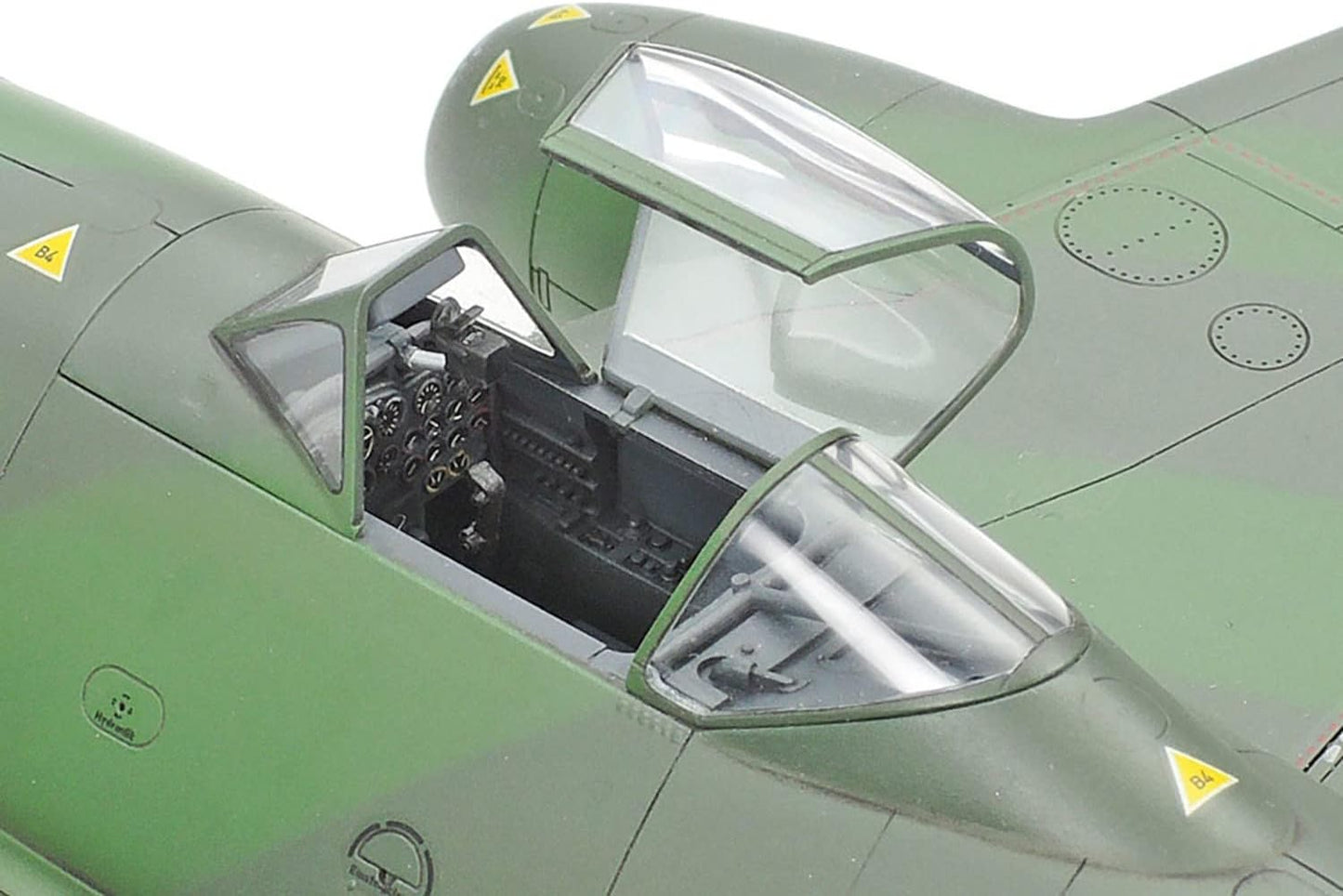Tamiya
Tamiya 1/48th scale Messerschmitt Me262 A-1A
Tamiya 1/48th scale Messerschmitt Me262 A-1A
Couldn't load pickup availability
The Messerschmitt Me 262, nicknamed Schwalbe (German: "Swallow") in fighter versions, or Sturmvogel (German: "Storm Bird") in fighter-bomber versions, is a fighter aircraft and fighter-bomber that was designed and produced by the German aircraft manufacturer Messerschmitt. It was the world's first operational jet-powered fighter aircraft.
The design of what would become the Me 262 started in April 1939, before World War II. It made its maiden flight on 18 April 1941 with a piston engine, and its first jet-powered flight on 18 July 1942. Progress was delayed by problems with engines, metallurgy, and interference from Luftwaffe chief Hermann Göring and Adolf Hitler. The German leader demanded that the Me 262, conceived as a defensive interceptor, be redesigned as ground-attack/bomber aircraft. The aircraft became operational with the Luftwaffe in mid-1944. The Me 262 was faster and more heavily armed than any Allied fighter, including the British jet-powered Gloster Meteor. The Allies countered by attacking the aircraft on the ground and during take-off and landing.
One of the most advanced WWII combat aircraft, the Me 262 operated as a light bomber, reconnaissance, and experimental night fighter. The Me 262 proved an effective dogfighter against Allied fighters; German pilots claimed 542 Allied aircraft shot down, although higher claims have sometimes been made. The aircraft had reliability problems because of strategic materials shortages and design compromises with its Junkers Jumo 004 axial-flow turbojet engines. Late-war Allied attacks on fuel supplies also reduced the aircraft's effectiveness. Armament production within Germany was focused on more easily manufactured aircraft. Ultimately, the Me 262 had little effect on the war because of its late introduction and the small numbers that entered service.
Share
